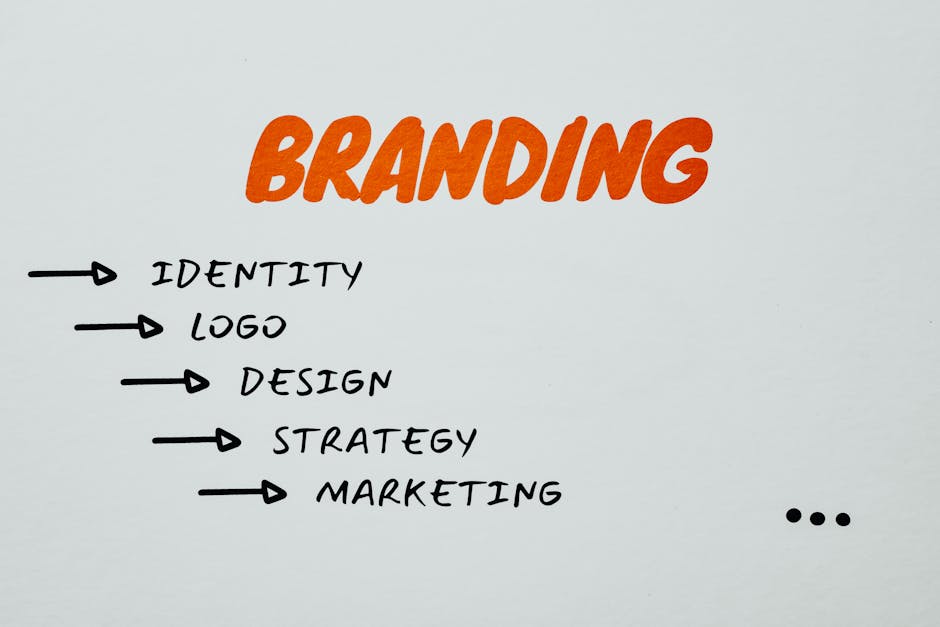Introduction to Digital Branding: The Core of Your Online Presence
Digital branding isn’t just a buzzword; it’s the backbone of your online identity. Picture it as the digital face of your business, something that tells your story and connects you with your audience even when you’re sleeping. At its core, digital branding combines your company’s logo, design, and message across all online platforms. This can include your website, social media, and even how your emails look and feel. It’s about consistency and making sure that at every touchpoint, your audience feels they are interacting with the same entity. This coherence builds trust, and in the digital world, trust is currency. So, consider your digital branding as your first step in building a relationship with your future customer. It’s not just about looking good; it’s about being recognizable, reliable, and relatable across the vast digital landscape.
Step 1: Defining Your Brand Identity and Values
Defining your brand identity and values is like laying the foundation for a house. Without it, everything else might just crumble. It’s all about knowing who you are as a brand. What’s your story? What makes you different from your competitors? Start by pinpointing exactly what your brand stands for. This might include your mission, the problems you’re solving, and the emotions you want your brand to evoke in people. Your values are your brand’s heart. They guide how your brand behaves, its personality, and how you connect with customers. Think about the big names out there; they all stand for something beyond their products. Your job is to find that for your brand. This step isn’t just important; it’s crucial for everything that follows in your digital branding strategy. If you nail this, you’re on your way to creating a brand that resonates with people, and that’s what really matters.
Step 2: Understanding Your Target Audience for Effective Digital Branding
Knowing your target audience is crucial in digital branding. It’s about understanding who they are, what they want, and how they interact online. Start by creating audience personas. These are fictional characters that represent your ideal customers. Think about their age, job, interests, and online behaviours. This step helps you tailor your branding message to resonate with your audience. Next, use social media and website analytics to dig deeper. See which platforms your audience uses most and what content they engage with. This data can shape your content strategy and help decide where to focus your efforts. Remember, your goal is to connect with your audience on a personal level. Speak their language and address their needs. This personalised approach makes your digital branding more effective and can set you apart from competitors.
Step 3: Crafting a Compelling Brand Message
In developing a strong digital branding strategy, crafting a compelling brand message is crucial. This message is what sets you apart from the competition. It’s about distilling your brand’s essence into a clear, memorable statement that resonates with your target audience. Think of it as your brand’s battle cry. It should echo the core values and mission of your business in a way that strikes a chord with potential customers.
Here’s the deal: your brand message isn’t just about what you sell. It’s about telling a story that connects on an emotional level. That means ditching the corporate jargon and speaking directly to the heart of your audience. Use language that’s simple, relatable, and genuine.
Be consistent across all platforms, whether it’s your website, social media, or email marketing. Your message should be recognizable and familiar, no matter where it’s encountered. Consistency builds trust, and trust builds loyalty.
In summary, your brand message is your flag in the digital world. Make it bold, make it unique, but most importantly, make it yours. That’s how you stand out in the digital crowd.
Step 4: Selecting the Right Digital Channels for Your Brand
Selecting the right digital channels for your brand is like choosing the right tools for a job. You don’t use a hammer to cut wood, right? So, you shouldn’t use Instagram to promote if your audience is mainly active on LinkedIn. It’s all about finding where your target audience hangs out online and then showing up there. Let’s break it down. First, figure out who your audience is. Are they young adults? Maybe Instagram and TikTok are your go-to. Are they professionals? LinkedIn and Twitter might be more your style. Once you know who you’re talking to, it’s time to think about what you’re saying. Each platform has its vibe. Instagram is great for visuals. Twitter’s perfect for quick, engaging updates. LinkedIn is ideal for professional content. Choose platforms that fit your brand’s voice and message. Also, don’t spread yourself too thin. It’s better to master one or two platforms than to be mediocre on five. Lastly, keep an eye on the results. Use analytics to see what works and what doesn’t. Then, adjust your strategy as needed. Remember, it’s not about being everywhere. It’s about being where it matters to your audience.
Step 5: Creating Consistent and Engaging Content Across Platforms
The last and crucial step is all about creating content that grabs attention and keeps it. This isn’t about just throwing things out there and hoping something sticks. You’ve got to be strategic. Think about it like setting the table for dinner; you want everything to match and look good together. That’s how your content across platforms should be – consistent and engaging. It doesn’t matter if it’s a Facebook post, a tweet, or a blog article; it all has to sing the same tune. Your audience needs to recognise your brand’s voice, whether they’re scrolling through Instagram or reading an email. This step is where you really get to show off your brand’s personality, but remember, it’s not just about what you say, it’s how you say it. Keep your messaging clear, your visuals sharp, and always aim to add value to your audience’s day. By doing this, you’re not just making noise; you’re building a community around your brand.
The Importance of Visual Elements in Digital Branding
Visual elements are not just pretty pictures. They are the heart of your digital branding strategy. Think of any big brand—what comes to mind? Most likely, it’s their logo, colours, or a specific font. That’s because humans are visual creatures. We remember and relate to images much more easily than text. So, when designing your digital brand, visual consistency across all your platforms is key. It tells your audience, “This is us, and you can recognise us by these visuals.” Your logo, website design, social media graphics, and even the fonts you choose, all play a vital role in making your brand memorable and distinguishable from others. But it’s not just about being memorable. Properly used, visuals can convey emotions and values, connecting with your audience on a deeper level. This emotional connection makes your brand relatable and builds loyalty. To sum up, never underestimate the power of visual elements in digital branding. They are much more than decoration; they are a vital communication tool that can make or break your brand’s success in the digital world.
Leveraging Social Media for Digital Branding Success
Leveraging social media for digital branding success is a game-changer. Nearly everyone’s online these days, with a big chunk scrolling through social media. This means your brand needs to be where the people are. First, know your audience. Find out where they hang out online. Are they Insta-lovers or do they flock to Twitter? Maybe LinkedIn is their professional playground. Once you know, dive in deep. Create content that speaks to them. Keep it real and relatable. Videos, memes, and stories? Yes, please! Interaction is key. Don’t just post and ghost. Engage with comments, share posts, and hop on trends that fit your brand vibe. Remember, consistency is your friend. Regular posts keep you in the feed and mind. Lastly, track your efforts. Use those analytics! Which posts got love and which missed the mark? Learn and tweak. That’s how you win at social media digital branding. No fluff, just the straight shot to get your brand noticed and loved online.
Monitoring, Measuring, and Adapting Your Digital Branding Strategy
Once your digital branding strategy is rolling, you can’t just kick back and watch. You’ve got to keep an eye on it, measure how it’s doing, and be ready to switch things up when needed. Here’s how you make that happen. First off, use tools to track your brand’s performance online. We’re talking website analytics, social media analytics, and online customer feedback. These tools show you what’s working and what’s not. If you see engagement dropping or negative feedback increasing, it’s a clear sign something’s got to change. Next, set specific goals and KPIs (Key Performance Indicators) to measure success. Maybe it’s increasing website traffic, boosting engagement on social media, or getting more email sign-ups. Whatever it is, having clear goals lets you know if you’re hitting the mark or missing it. Remember, the digital world changes fast. A strategy that’s killing it today might be old news tomorrow. Stay on your toes and be ready to tweak your plan or even overhaul it if necessary. This isn’t a set-it-and-forget-it kind of deal. It’s all about being proactive, measuring often, and adapting your strategy to keep your brand on top.
Conclusion: The Ongoing Process of Digital Branding
Building a solid digital branding strategy is not a set-it-and-forget-it job. It evolves. As your business grows and market trends shift, your digital branding needs to adapt. It’s crucial to keep monitoring, analysing, and tweaking your strategy to stay ahead of the competition. Regularly check your analytics to see what’s working and what’s not. Listen to your audience’s feedback and be ready to incorporate new technologies and platforms that align with your brand’s values and message. Remember, digital branding is an ongoing journey that requires patience, persistence, and a keen eye for detail. Stay proactive and your brand will thrive in the digital realm.






